- Home
- John Grisham
Witness to a Trial
Witness to a Trial Read online
1
The first witness called by the State of Florida was Clive Pickett, the rather rustic sheriff of Brunswick County, a sparsely populated corner of the Panhandle. Sheriff Pickett took the stand in full uniform and swore to tell the truth. It was his job to describe the crime scene and tell the jury what they had found.
What they had found were two dead bodies, a man and a woman, both naked and both with two shots to the head. They were in her bedroom and apparently had been caught in the act. She was married to someone else, as was he. At some time between 2:00 and 3:00 p.m. on January 17, 1995, the defendant, sitting right over there at the defense table, had allegedly barged in and found them. He was married to the woman and knew the man well.
The first large color photo, State’s Exhibit No. 1, was an exterior shot of the house, an old wood-framed dwelling located on Tinley Road, about two miles from the Tappacola reservation and thus not on tribal land but in the county and under Pickett’s jurisdiction. The sheriff explained that there were no signs of forced entry into the house. The 1984 model Ford truck sitting in the driveway belonged to the deceased gentleman, one Son Razko.
The second photo, No. 2, showed the woman lying across the bed, on her back, her head and shoulders surrounded by blood that had drenched the white sheets. As always, the defense lawyer had objected to the photo on the usual grounds of its being inflammatory, prejudicial, and so on, but his objections had been overruled. The crime-scene photos, regardless of how grisly, were always admitted. The jurors eagerly passed the second one around even as they gaped at it in horror, some looking away, unable to focus on what they were holding. Same for the third photo, Exhibit No. 3, one of the man sprawled on the floor in his own blood. The next two photos, Exhibits 4 and 5, were of the bedroom and the bodies but from different angles. By the time the photos made the rounds in the jury box, the jurors were glaring at the defendant as if they couldn’t wait to dispense the justice he deserved.
A large diagram was placed on a tripod near the jury box, and the prosecutor walked the sheriff through the layout of the house, the two acres around it, Tinley Road, and the tribal land nearby. He stressed the remoteness of the crime scene. The nearest house was three hundred yards away and not visible from the driveway.
With the stage carefully set, the prosecutor yielded the witness. Cross-examination produced nothing new and lasted only a few minutes. Sheriff Pickett was excused and, since he would not be called again, allowed to remain in the courtroom.
—
The Defendant. His name was Junior Mace, a full-blooded Tappacola Indian, age thirty-seven, father of three, and husband of Eileen, the woman he was accused of killing. Until he was arrested, he had driven a truck and delivered propane for a company out of Moreville. The job paid barely enough to keep his family afloat. He and Eileen had a small mortgage on an old house, one they had bought from her parents before they died. Because he had no money, he was forced to settle for a court-appointed lawyer.
Junior was a big man, over six feet, and lean, with long dark hair that fell to his collar. The fifteen months he’d spent in jail awaiting this trial had not lightened his dark skin. For his trial he wore the same outfit every day—faded jeans and boots and a brown leather shirt with beads around both wrists. He sat straight and proud, absorbing every word without flinching, though he wanted to scream his innocence.
2
The second witness was a hick cop named Willard who, in spite of being called a homicide detective, was nothing more than the senior deputy on Pickett’s slim force. In his eleven years with the sheriff, he said, he had investigated only four other murders, though this was not mentioned by the defense lawyer. For the occasion Willard wore his only sports coat, one he’d acquired years ago before packing on the last eighty pounds.
Willard told the jury that the police had immediately begun looking for Eileen’s husband, the defendant, Junior Mace, not as a suspect but as a family member. Oddly enough, a bartender fifteen miles from the crime scene had called the sheriff’s office around 7:00 p.m. and said Junior was sitting in his pickup truck, slumped over the steering wheel, too drunk to drive, and in need of help. The bartender knew Junior and said he was just trying to warn the cops and keep the roads safe. Willard and two other deputies raced to the bar and found Junior in his truck, unconscious and barely breathing. They called an ambulance and he was taken to the hospital in Walton County. After he was hauled away, Willard, without a warrant, searched his truck and found a Smith & Wesson revolver with two bullets left in the chamber. Under the front seat he also found a wallet belonging to Son Razko.
State’s Exhibit No. 6 was the Smith & Wesson, an unlicensed firearm with the registration number filed off. No. 7 was the wallet, complete with Mr. Razko’s Florida driver’s license, one credit card from a bank, one from an oil company, and $17 in cash. These were passed around the jury box.
Months earlier the defense had attacked the warrantless search on the grounds that there was no probable cause, no solid legal reason to poke around the truck. The judge, though, ruled that the search was valid; thus the gun and wallet were admissible into evidence.
—
The Judge. Her name was Claudia McDover and she was forty years old. The previous year she had defeated an eighteen-year incumbent by a thousand votes. This was her first capital murder case; indeed, it was her first murder case of any variety. Before becoming a judge, she had been a small-town general practitioner with a decent reputation and modest success. Her campaign had been well financed, and she knocked on doors for months, promising, as always, a tough law-and-order courtroom. She strongly supported the death penalty and seemed determined, at least to those lawyers watching the case, to ensure a death verdict in the matter of Junior Mace.
She felt as though she owed it to her voters, all residents of rural northwest Florida.
3
The third witness was the bartender himself. He went by Spike and it was obvious Spike had spent most of his life on one side of the bar or the other. His long gray hair was pulled tight into a ponytail. His ears were adorned with metal. A white, perfectly pointed goatee dripped from his chin. Spike seemed just as relaxed on the witness stand as he would have been pulling pints. He explained to the jurors that Junior stopped by at least once a week for a few beers after work and was generally talkative and in a pleasant mood. But on his last visit he was obviously disturbed by something. He quickly drank two beers—always from bottles, never draft or from cans—and said nothing. He sat at the end of the bar and stared straight ahead, lost in another world. A crowd came in and the bartender got busy elsewhere. He noticed Junior had moved away from the bar and was tossing darts with a man the bartender had never seen before.
Junior always paid with cash so there was no record of how many beers he had ordered. Plus, the stranger was buying a few rounds. Spike did not see Junior leave the bar, but around 6:30 a regular had whispered to him that a drunk had passed out in the parking lot. Spike went outside, found Junior sitting against a wall, and managed to get him into his truck. When Spike asked for his keys, Junior refused and for a second seemed belligerent. Spike then called Clive Pickett’s office and said they might have a problem. Within twenty minutes Officer Willard and two other policemen were there.
Spike said he was stunned to hear about the murders, but looking back it made sense. Something was definitely wrong with Junior that last visit.
—
The Bar Owner. He owned several bars along the Florida Panhandle, along with a few lounges, liquor stores, and a strip club. Three months before the murders he had bought the bar where Junior stopped. He’d paid too much for it, but by then he knew Junior’s movements and had decided it was the perfect place.
He was in c
ourt to observe the testimony from Spike, his employee, and to make sure that Spike stuck to the story of Junior arriving that day in a funk and acting weird. Though Junior usually limited himself to two or three beers, and had probably done so on that day, it was important to convey to the jury the image of a troubled man drinking heavily, a man so drunk he had collapsed outside the building. Junior’s blackout had little to do with alcohol, but that secret would be kept forever. The bar owner had arranged it all.
Disguised and sitting in the back row, he observed Spike on the stand with a trace of smugness as the pieces of his neat little plot fell into place. He lived in the shadows of his own dark world, a place where hard cash was king and from where people had to be eliminated from time to time.
4
The fourth witness was a ballistics expert, name of Montgomery, from the state crime lab. He took the stand in a nice suit and dark tie and impressed everyone with his credentials. Four bullets were removed from the crime scene: two from the head of Son Razko, one from the head of Eileen Mace, and one from the mattress. That fourth one had entered her skull an inch above her right eyebrow, passed all the way through her brain, and made a ghastly exit wound that was about three inches in diameter. State’s Exhibits 8, 9, 10, and 11 were enlarged photos of the bullets. In technical terms Montgomery explained that the recovery of the bullets immediately revealed the make and model of the weapon; in this case, a Smith & Wesson .38-caliber revolver. With a large diagram, and acting much like the learned professor, he explained that as each bullet is fired it twists as it goes through the barrel, known in the business as “rifling.” This leaves microscopic marks and grooves on the bullet and allows an expert such as himself to determine which gun fired which bullet. He had no doubt that the weapon recovered from Junior’s truck fired the four bullets. State’s Exhibits 12, 13, 14, and 15 were the actual bullets themselves.
The prosecutor handed Montgomery four spent cartridges. The expert told the jury that the four were recovered from the bedroom. Whoever fired them was in too big a hurry to collect them. Using a comparison microscope, he was able to determine that the four cartridges were fired from the same Smith & Wesson.
Much of his testimony was technical, and while at first interesting, it soon became tiresome. He was the expert. If he said the bullets came from the gun in Junior’s truck, who could dispute him?
State’s Exhibits 16, 17, 18, and 19 were the spent cartridges.
The defense lawyer’s cross-examination of Montgomery was on the soft side. What could he really do? It was obvious what had happened in the bedroom.
—
The Defense Lawyer. His name was Larry Swoboda, age thirty-one, an aspiring criminal defense lawyer from Panama City.
Brunswick County had a public defender, a rather useless stiff who’d begged off, claiming some vague conflict of interest. The truth was he’d never touched a capital case and wanted to quit the job anyway. Judge McDover knew he was too inexperienced and appointed Swoboda, who initially had wanted the case. However, not long after he got it, he realized he was in way over his head.
Like all criminal defense lawyers, Swoboda had already learned that almost all of his clients claimed to be innocent. Junior was no exception. Since their first meeting in jail, Junior had vehemently protested the charges. He was being framed in a perfect setup. He loved his wife, had never been unfaithful, and Son Razko was his friend. He had been making deliveries at the time they were murdered. He did not own a gun and had not fired one in over twenty years. After fifteen months of listening to Junior, Swoboda finally believed him.
5
The fifth witness was also from the state crime lab. Dr. Unger was a pathologist whose task was to describe, in horrifically gory detail, the damage inflicted by the four bullets. He had a stack of color photographs, State’s Exhibits 20 through 29, of Son Razko and Eileen Mace on the slab as he picked and probed through their brains, tracing the paths of the projectiles and describing the damage.
Swoboda objected again and again, claiming the testimony and exhibits were overkill and grossly prejudicial. Her Honor felt otherwise, and for three hours the jurors squirmed as Dr. Unger went about his business. He produced large diagrams, Exhibits 30 through 33, of the precise routes the bullets had taken. And he wrapped up his testimony nicely with the opinion that all four were fired from a handgun at close range.
On cross-examination, Swoboda scored no points. It was, after all, rather obvious how the two victims had died. What real difference did it make if the killer was firing from five feet away or from six inches?
Frustrated, Swoboda tossed his legal pad on the defense table and fell into his chair. He then made the mistake of looking at the jurors, almost all of whom were glaring at either him or his client. After three days of trial, it was obvious to him, and to every other person in the courtroom, that things were not going well for the defense.
—
The Jury. Nine whites, three blacks, no Native Americans. Equal split on gender. All registered voters of Bay County, next door to Brunswick. Three with college degrees, two without jobs, average age of fifty-two, so a fair amount of gray hair. Conservative, middle class, Protestant for the most part, and weary of crime and the senseless violence wrecking the stability of our society. During the selection process, all twelve claimed to have no problem with the death penalty.
They had been warned by the judge against discussing the case until their final deliberations, but such precautions were usually ignored. During lunch breaks and long gaps in the trial when the lawyers were back in chambers haggling over fine points in the law, the jurors were whispering. Some of the men in particular were intrigued by what Junior would say, if in fact he testified. Catch your wife in bed with another man, and a friend at that, and a violent reaction might be understandable. A good butt-kicking, maybe some broken bones. Junior certainly looked like the type who could draw blood with his hands, especially in a rage. But two bullets to each head? It seemed so cold-blooded.
The women had heard enough. They might forgive a shot or two to wound the man, but the killing of Eileen was simply too much.
6
The sixth witness was Louise Razko, wife of the murder victim.
With the State’s case clicking right along and finding little resistance from the defense, the prosecutor made the mistake of attempting to arouse some emotion. This is common in murder cases—bring in someone close to the victim, someone who’ll weep in front of the jurors and give them even more reason to convict. Such testimony has no probative value, but judges always allow it.
Judge McDover certainly allowed it. Anything the State wanted.
The problem was obvious and somehow the prosecutor missed the obvious. Could he really expect Louise to cry and carry on when her husband had been caught with another woman, and one she knew well? Was Louise saddened by his death, or was she secretly pleased that his treachery had been discovered?
Fortunately, at least for the State, Louise was the emotional type and began crying shortly after taking the oath. Between sobs, she managed to complete a few sentences and went on about what a good man Son had been, a great father, and, yes, a good husband. She missed him so, as did her kids.
Swoboda objected by asking why any of this was relevant. McDover overruled him.
He had no questions for her on cross. She was led away in tears. Most of the jurors, though, seemed skeptical. Were some of those tears actually tears of joy because her two-timing husband had been caught? It was hard to tell. Most observers questioned the move by the prosecutor, but there was no real damage to the State’s case.
—
The Prosecutor. His first name was Wagner, an extremely odd choice by his mother, but then it was her maiden name and she thought it fit him nicely, at least in the hospital. By the age of ten, though, he hated it for many reasons and chopped it in half. He’d gone by Wag for the past thirty years. Wag Dunlap. The voters seemed to like the oddness of his name.
W
ag was thrilled to be on the hunt for his first death verdict. At the time Florida had three hundred men on death row and not a single one had been sent there by Wag. At the annual prosecutors’ conference down in Miami he often felt, well, inadequate. The heavy hitters were chosen to speak at seminars and share trial tactics, but not Wag. He had no medals on his chest, nothing to brag about over drinks. Sure, he had his share of convictions and had successfully prosecuted two other murderers, but only for run-of-the-mill killings. Nothing even close to a capital case. Junior Mace would put him on the map.
And what a beautiful set of facts he’d been handed! A tawdry affair. Junior, a good man, deceived by his friend Son, who’d been sneaking in the back door for how long? Caught in the act, a fit of rage, two cold-blooded killings, and a defendant who refused to avail himself of the defense of “irresistible impulse.” Florida law had long since recognized such a defense, and Junior could certainly avoid the death penalty and perhaps a long sentence if he would just admit that he’d acted out of temporary insanity and done what a lot of faithful husbands would have done. Junior, though, was steadfast in his denials.
So, why take the wallet? Why turn a horrible crime into something even worse? Murder alone does not trigger a capital case. Murder plus something else is needed—robbery, rape, kidnapping, killing a cop or a child—the list was long. Why turn into a thief after just becoming a murderer? There would never be an explanation, because Junior denied everything.
He caught them, killed them, took the wallet, and drove to a bar where he got drunk and passed out. They found the murder weapon, minus four bullets out of six, and the wallet in his truck. The facts lined up beautifully. The case was open and shut.

 Playing for Pizza
Playing for Pizza The King of Torts
The King of Torts Theodore Boone: Kid Lawyer
Theodore Boone: Kid Lawyer Skipping Christmas
Skipping Christmas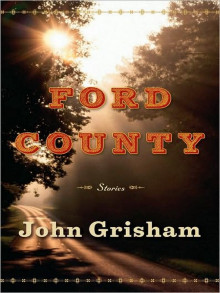 Ford County
Ford County Partners
Partners The Last Juror
The Last Juror A Painted House
A Painted House A Time to Kill
A Time to Kill The Innocent Man
The Innocent Man Sycamore Row
Sycamore Row The Runaway Jury
The Runaway Jury The Racketeer
The Racketeer Rogue Lawyer
Rogue Lawyer The Appeal
The Appeal Camino Island
Camino Island Gray Mountain
Gray Mountain The Firm
The Firm The Testament
The Testament The Scandal
The Scandal The Brethren
The Brethren Calico Joe
Calico Joe The Associate
The Associate The Pelican Brief
The Pelican Brief The Abduction
The Abduction The Activist
The Activist The Street Lawyer
The Street Lawyer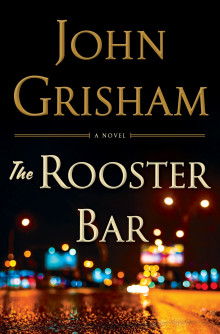 The Rooster Bar
The Rooster Bar The Summons
The Summons The Fugitive
The Fugitive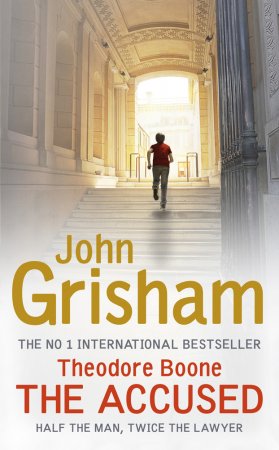 The Accused
The Accused The Broker
The Broker The Client
The Client The Litigators
The Litigators The Whistler
The Whistler The Rainmaker
The Rainmaker The Confession
The Confession The Partner
The Partner Witness to a Trial
Witness to a Trial Bleachers
Bleachers The Chamber
The Chamber A Time for Mercy
A Time for Mercy The Reckoning
The Reckoning![[Theodore Boone 02] - The Abduction Read online](http://i1.bookreadfree.com/i/03/23/theodore_boone_02_-_the_abduction_preview.jpg) [Theodore Boone 02] - The Abduction
[Theodore Boone 02] - The Abduction The Accused tb-3
The Accused tb-3 Theodore Boone: The Activist
Theodore Boone: The Activist Gray Mountain: A Novel
Gray Mountain: A Novel The Confession: A Novel
The Confession: A Novel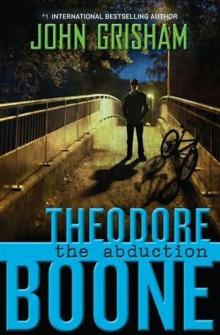 The abduction tb-2
The abduction tb-2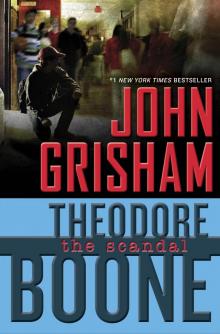 Theodore Boone: The Scandal
Theodore Boone: The Scandal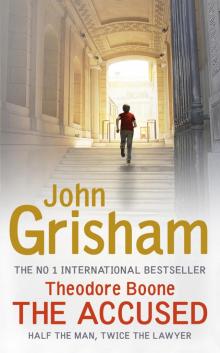 Theodore Boone: The Accused
Theodore Boone: The Accused The Activist tb-4
The Activist tb-4 Ford Country
Ford Country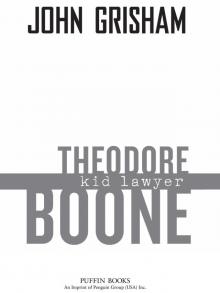 Kid Lawyer
Kid Lawyer Sycamore Row jb-2
Sycamore Row jb-2 Chamber
Chamber Three Classic Thrillers
Three Classic Thrillers